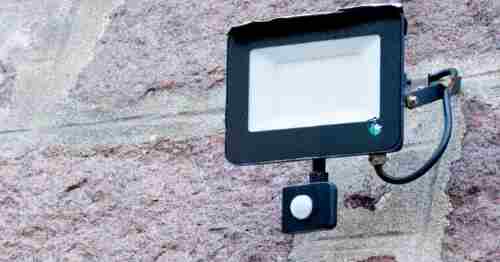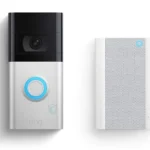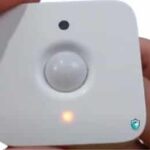Did you want to know Why is your Motion Sensor Light Strobing On and Off? Yes, there are several reasons for it to happen such as a bad electrical circuit, a bad bulb, voltage fluctuations, etc.
Having an outdoor motion sensor light strobing can be incredibly frustrating and concerning.
As someone who recently dealt with this issue at my own home, I know firsthand how unsettling it can feel to have your exterior lighting acting erratically and flashing rapidly.
It left me feeling unsafe and anxious whenever I arrived home at night.
If your motion sensor light is strobing, you’ve likely noticed it turning on and off repeatedly in quick succession – almost like a strobe light at a club.
This strobe or flickering effect is not normal and usually indicates some type of problem with your light fixture that needs troubleshooting.
In this comprehensive guide, I’ll cover all the common culprits that can cause a motion sensor light to strobe.
You’ll learn ways to diagnose and fix the issue yourself through some DIY troubleshooting.
I’ll also discuss when it’s better to call in a professional electrician to handle any wiring or electrical repairs.
By the end, you’ll understand exactly why your motion light strobes and have actionable steps to get it working properly again. Let’s dig in!
Common Causes of Motion Sensor Light Strobing On and Off
Motion sensor lights work by having a motion detector (also called a motion sensor) that picks up movement within its coverage area.
This sensor triggers the light to turn on when it detects motion and then off again after a preset time interval when the movement stops.
This automated on/off functionality is why motion lights are so popular for security, convenience, and energy efficiency. However, when the light begins strobing on and off repetitively, something is interfering with the normal operation.
Here are the most common culprits that can cause a strobing or flickering motion sensor light:
- Faulty light bulb: LED and CFL bulbs are prone to strobing, older incandescent bulbs can have damaged filaments. The bulb itself may be the problem.
- Issues with motion sensor: Bad connections, misaligned sensor, dirt on lens, faulty sensor unit. Problems with the sensor prevent it from working right.
- Wiring problems: Loose, corroded, or damaged wires leading to light fixture. Short circuits and bad connections cause flickering.
- Power surges: Surges and “dirty” power from the utility company can cause lights to strobe. Whole home issue.
- Bad fixture: If all else checks out, a defective motion sensing fixture with internal issues could be the culprit.
I’ll now go into more detail on troubleshooting each of these common causes of strobing motion sensor lights.
Troubleshooting a Strobing Motion Activated Light
When your outdoor motion lighting starts strobing, there are several things you can check yourself to isolate and fix the problem:
Inspect the Light Bulb
The light bulb itself being used in the motion sensor fixture can sometimes be the reason the light is strobing on and off.
LED and CFL bulbs are more prone to strobing issues compared to incandescent lights. The LED driver circuitry and CFL ballasts can get faulty and cause flickering, while old incandescent bulbs may have damaged filaments causing similar issues.
If your motion light uses LED or CFL bulbs, try swapping it out with a traditional incandescent bulb to see if the strobing stops. Make sure the replacement incandescent bulb has the proper wattage and light temperature (expressed in Kelvins).
You also want to check that the bulb is making good contact with the socket and that there is no corrosion or dirt buildup on the base of the bulb or the electrical contacts inside the socket. Clean any debris with a dry cloth or brush.
Finally, firmly screw in the light bulb to ensure a tight connection. A loose bulb results in a poor contact that could manifest as strobing or flickering.
If putting in a new incandescent bulb solves the strobing issue, then replacing the LED or CFL bulbs may be the fix. Buy from a reputable lighting brand for longer lifespan.
Test the Motion Sensor
Issues with the motion sensor itself can also cause the connected light fixture to strobe on and off. The motion sensor may not be triggering the light reliably for a variety of reasons.
Carefully inspect the motion detector module – usually mounted towards the top of the light fixture’s housing. Look for any dirt, debris, or insect nests that may be blocking the sensor’s field of view. Using a dry cloth, gently wipe any debris or grime off the motion sensor lens.
Also check for overgrown vegetation, yard decorations, or other obstructions that may be blocking the sensor’s line of sight or preventing it from detecting movement properly. Trim back any bushes or branches disrupting detection.
Adjust the motion sensor settings if available. Increase the sensitivity if needed so it can detect motion from farther away. Expand the coverage angle so its field of view is wider.
The motion sensor should reliably turn the light on when you do a “walk test” across its detection zone. If the light still strobes inconsistently, the motion sensor likely needs replacement.
Inspect Electrical Wiring
Faulty wiring that leads to a poor connection between the power source and light is another prime suspect for causing motion light strobing.
Shut off the power to the affected motion sensor light at the circuit breaker. Take the fixture down and visually inspect the wiring coming into the back of the light housing.
Look for any cracked or frayed wiring, loose connections, broken leads, or corrosion on the wiring connectors. Using a voltmeter, check for continuity in the wires. Any shorts, open circuits, high resistance, or poor connections can lead to strobing.
Also inspect wiring inside the light fixture junction box and any connectors hidden behind the motion sensor fixture. A poor connection due to loose, corroded, or damaged wires can manifest as the light strobing on and off repeatedly.
Any wiring issues found will need to be repaired or replaced. Cracked wires with exposed copper need to be covered with electrical tape. Corroded wires may need splicing or replacement. Consult with an electrician if you are unsure of any wiring repairs.
Rule Out Power Source Issues
Sometimes the root cause of a flickering or strobing light may not be the fixture itself, but rather “dirty” power coming from the electrical utility lines. Power surges and fluctuating voltage can cause lights to flicker.
If you’ve noticed the strobing effect on other lights in the home, or have seen lights dimming and brightening at random, the issue likely lies with the incoming power supply.
installing a whole home surge protector at the breaker box may help stabilize power delivery to lights. Additionally, products like power line conditioners and uninterruptable power supplies can clean up “dirty” utility power to prevent flickering. Consider adding one if power issues are widespread.
Calling your utility company to report intermittent power fluctuations can also help track down any external issues triggering your motion light to strobe. Any problems they discover with area power lines or transformers may fix the strobing.
Replace Defective Motion Sensor
If you’ve ruled out the bulb, motion sensor, wiring, and power supply as potential culprits, then the motion sensing fixture itself is likely defective.
There may be internal wiring problems or circuitry faults within the motion sensor light causing the strobing even with external power and wiring being okay.
At this point, replacing the entire motion sensing light fixture with a new unit is probably the best option. Swap it out with another motion activated fixture from the hardware store.
Also consider replacing just the motion sensor module, especially if it’s a detachable component within the overall light fixture. This preserves the housing while giving the electronics a fresh start.
Be sure to get an outdoor-rated motion sensor and check that it has similar size, lighting output, and detection range as the old one. Install per included directions.
Preventing Motion Lights From Strobing
To avoid dealing with a strobing motion light again in the future, keep these tips in mind:
- Use good quality LED bulbs from reputable lighting brands to avoid flickering issues. Stay away from ultra-cheap off-brand bulbs.
- Install motion lighting fixtures that have built-in surge protection. This safeguards sensitive electronics against power fluctuations.
- Periodically clean motion sensor lenses and make sensitivity adjustments so detection remains consistent.
- Have an electrician inspect wiring connections leading to outdoor lights, repairing any loose, corroded, or damaged wires.
- Consider whole home surge protectors, power line conditioners, or UPS backups if your area suffers from frequent power spikes and dirty electricity.
Taking a proactive approach ensures your outdoor motion lights operate smoothly for years to come. But even with preventive steps taken, issues can still crop up. Use the troubleshooting tips in this guide to efficiently diagnose and repair a strobing motion detector light.
Frequently Asked Questions About Motion Lights Strobing
Why Is My Motion Light Strobing?
Having your outdoor motion light start rapidly strobing or flashing on and off can be jarring and concerning. In most cases, strobing is caused by some underlying problem with the light fixture that needs diagnosis and repair.
Potential culprits include a faulty bulb (like an LED with bad driver circuitry), an obstructed or malfunctioning motion sensor, loose wiring connections, power fluctuations, or simply a defective fixture. Methodically troubleshoot each component and make repairs like replacing bulbs, cleaning sensors, inspecting wires, or installing surge protectors as needed. Strobing is the light’s way of indicating an issue needs addressed.
Why Does My Outdoor Light Keep Flashing?
When your outdoor security light starts randomly flashing, the likely culprit is a dirty or obstructed motion sensor. The motion detector can’t “see” movement reliably, so the light flashes on and off erratically. Gently clean the sensor lens with a microfiber cloth and make sure bushes or objects are not blocking its field of view. Also check motion detector settings—increasing sensitivity and coverage angle often solves false flashing.
How Do You Stop LED Strobing?
To stop an LED light from strobing, first try replacing it with an incandescent bulb, since LEDs are prone to flickering issues as drivers fail. Also ensure the LED bulb is properly seated in the socket with clean contact points. If swapping the bulb doesn’t help, look into wiring problems like loose connections or shorts. Adding a whole home surge protector can also help condition dirty power causing LEDs to strobe. As a last resort, replace the entire LED fixture to permanently solve strobing issues.
Why Do LED Lights Start Strobing?
LED bulbs can begin strobing over time due to failing driver circuitry, overheating, voltage irregularities, and loose wiring connections. Manufacturing defects make some LEDs prone to developing strobing or flickering issues as they age and degrade. Higher quality LED bulbs from reputable brands typically have a lower risk of strobing problems over the lifespan. Replacing suspect LED bulbs with new, higher quality units will usually stop unwanted strobing.
Why Are My Lights Strobing And How Does It Stop?
Lights strobing is almost always indicitive of some type of electrical issue that needs troubleshooting. Start with easy DIY steps like replacing bulbs, cleaning or adjusting motion sensors, inspecting wiring connections, and installing surge protectors. If the strobing persists, consult an electrician to thoroughly diagnose and repair or replace any faulty wiring, bad fixtures, or external utility power issues. The strobing effect will stop once the underlying electrical problem is properly addressed.
Are Strobing Lights Bad?
Strobing lights themselves are not inherently dangerous, but rather indicate an electrical problem exists. The main concern is that strobing can indicate an electrical short, faulty component, or fire hazard if left unaddressed. Troubleshoot the root cause and make repairs promptly before a minor issue escalates. For those sensitive to flashing lights, prolonged exposure can trigger headaches, dizziness, and irritation. Have a professional evaluate and fix strobing lights.
Why Do Strobing Lights Bother Me?
Strobing or flickering lights can induce headaches, eyestrain, dizziness, and even nausea in those sensitive to visual stimuli. Our brains interpret flashing lights as an emergency signal, so strobing triggers fight-or-flight reactions. Those already prone to migraines or neurological disorders can be especially impacted. Fix any strobing lights right away, limit exposure, and consider using non-fluorescent lighting to minimize reactions.
Why Does My Smart Light Keep Flashing?
A smart bulb that randomly flashes typically indicates WiFi connectivity issues. Power cycle bulbs and routers to reestablish a stable connection. Make sure bulbs are within range of the router’s signal. Add WiFi extenders or mesh networking devices if needed. You may also need to check for software or firmware updates for the bulbs and related smart home hubs/bridges. Consult your device manufacturer for troubleshooting tips specific to your smart lighting brand.
Why Is My LED Flood Light Strobing?
LED flood lights often begin strobing due to overheating, voltage spikes, and worn out driver components. The housing design traps in heat. Frequent power surges damage sensitive electronics over time. Replace suspect LED flood light bulbs first. Ensure sufficient outdoor light ventilation. Add surge protectors to handle power fluctuations. As a last resort, replace the overheating LED flood light fixture with a unit containing better thermal management and surge suppression built-in.
Why Is My Outdoor LED Light Strobing?
Moisture, surges, animals, and bug nests frequently damage outdoor LED lights, causing strobing. Replace any bulbs showing corrosion or wiring issues. Install outdoor-rated LED fixtures with sealed housings and waterproof connectors. Ensure wiring connections are tight. Add surge protectors to handle grid power fluctuations. Regularly check and clean LED lenses/housings to prevent insect obstructions that can initiate flickering and faults.
What Is The Flickering Effect Of LED Lights?
The flickering effect seen in LED lights is a rapid cycling of light intensity, often perceived as pulsing, strobing, or flashing. This strobe effect arises from faulty components like low-quality power supplies/drivers and issues with how the LED circuitry is designed. Poor circuit tolerance for voltage dips and wiring inductance can also cause visible LED flickering. Higher quality LED driver circuitry and proper fixture design prevents problems with strobing and flickering effects over the lifetime of the LED.
Why Is Only One Of My Motion Lights Strobing While The Others Seem Fine?
Each motion light has its own wiring, bulb, and sensor that could be the source of issues. Strobing is often isolated to specific fixtures that have a problem source like a bad bulb or connection. Check each component individually in the affected light.
If I Replace The Whole Motion Sensor Fixture, Will That Stop The Strobing For Good?
A: In most cases, yes. A new motion sensing fixture replaces any defective internal wiring, lamp socket, and sensor in one shot. Just be sure the issue isn’t power related first, or the new light may still strobe.
Can A Strobing Motion Light Trigger Seizures Or Pose Other Health Risks?
It’s unlikely, but for sensitive individuals prone to photosensitive epilepsy or migraines, the rapid on-off flashing could be an issue. Fix the strobing as soon as possible just to be safe.
The Motion Light Is Strobing During The Day – Does That Point To Any Specific Problem?
Daytime strobing is more likely an issue with the sensor rather than the bulb or wiring. The sensor may be hypersensitive and getting falsely triggered by light changes or reflections during the day. Try adjusting the sensor settings or relocating/covering the sensor module.
How Do I Get My Flickering Motion Light Repaired If I’m Uncomfortable Doing Electrical Work?
Hiring a licensed electrician is always the safest bet if you have any concerns about your wiring. They can diagnose and professionally fix the strobing light. Cost is usually $100-$200. Well worth it for the peace of mind!
Conclusion
Having your outdoor motion lighting randomly strobing on and off can be maddening and unsettling. While troubleshooting the exact cause takes some time and effort, the good news is that most strobing issues can be resolved with some DIY elbow grease or help from an electrician.
Start methodically checking the light bulb, motion sensor, wiring, and power. Look for debris buildup, loose connections, and problem components like a faulty LED bulb or worn out sensor. Repair or replace parts as needed until the strobing stops.
And remember to take preventive steps like using surge protectors, keeping fixtures clean, and having wiring inspected periodically. With a bit of care, your motion security lighting will work reliably for years, keeping your property well illuminated and deterring unwanted guests.




